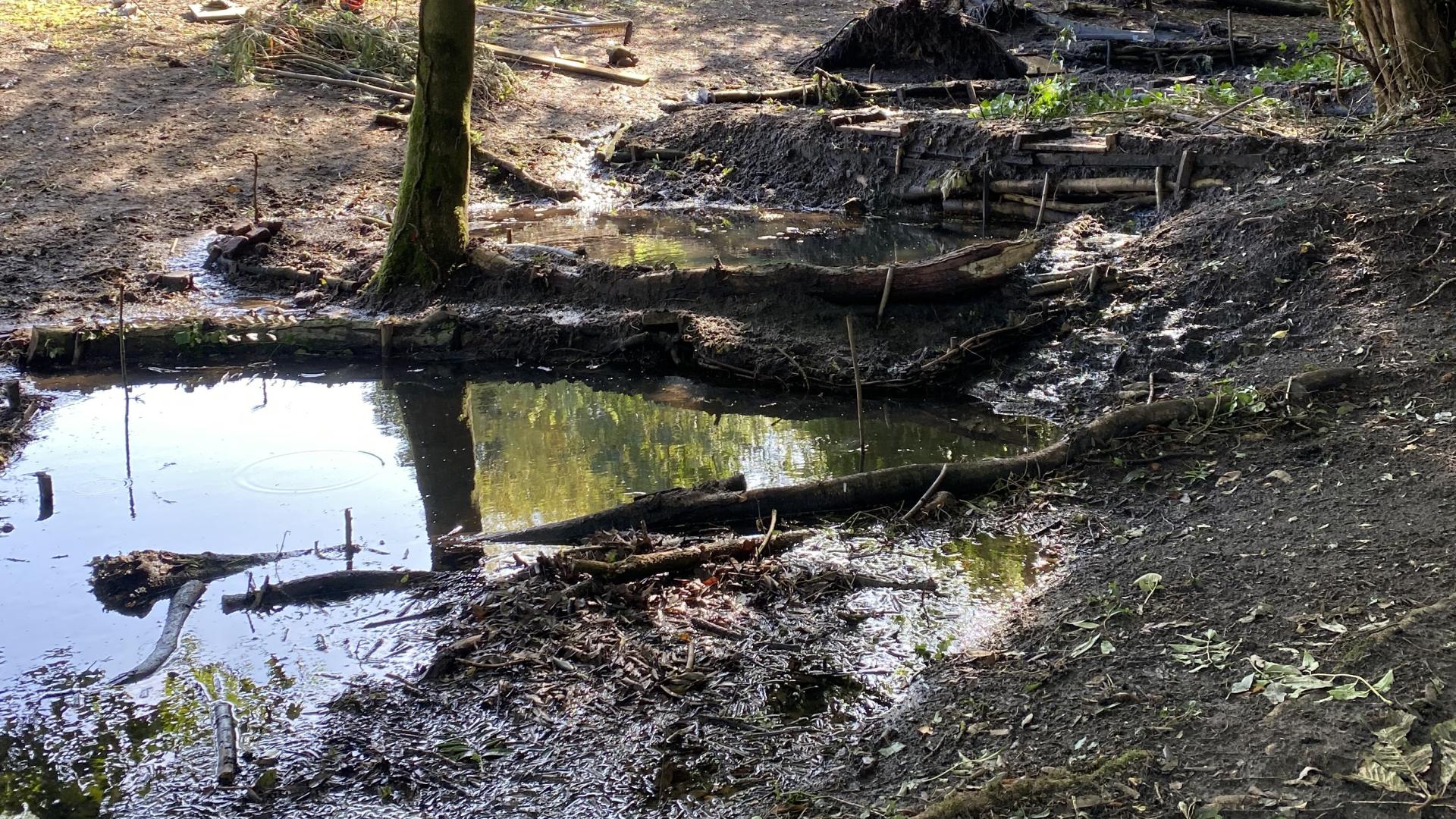A Valley Fen
In Autumn 2022, thanks to the generosity of our members and supporters, we bought Larkins Lane Field in Old Headington Village. The field is a mix of grassland, woodland and scrub, with a shallow stream running through it. This stream is evidence of a surviving spring-fed valley fen.
Alkaline fenland is formed when acidic rainwater passes through limestone, dissolving calcium on its way. On reaching impervious stone, the water moves sideways until it emerges from the ground as a mineral-rich spring, which encourages plants to grow. As the ground stays waterlogged the plant remains don’t decompose fully, eventually forming peat. The calcium in the water is deposited as a form of crust, like the limescale in our kettles. It encourages the growth of brown mosses, flowering plants, grasses, sedge, rush and algae.
We’re restoring this precious landscape. We need to keep the fen wet to preserve the existing peat and enable more peat to form. As peat is a wet carbon store, creating more helps tackle the effects of climate change. We’ve widened and flattened the land around the stream to restore the valley profile and we’re controlling the flow of water with a series of small leaky log dams. We’ve sown wetland plants with seed donated by our friends at the Lye Valley. As the leaves die each year, they sink into the water, and will eventually turn into peat.
Across Europe, much of this important habitat has been lost, so rare survivals like ours are important. We plan to install a boardwalk to enable visitors to view this area more closely. In the meantime, you can see our valley fen restoration project at Matthew Arnold reserve (Boars Hill).
Our project depends on the hard work of our dedicated band of volunteers and ecologist Rod d’Ayala. We’re very grateful to them. If you would like to get involved, please contact Hannah (h.brockwell@oxfordpreservation.org.uk).

